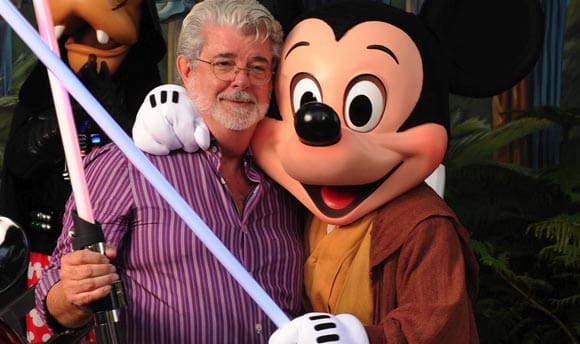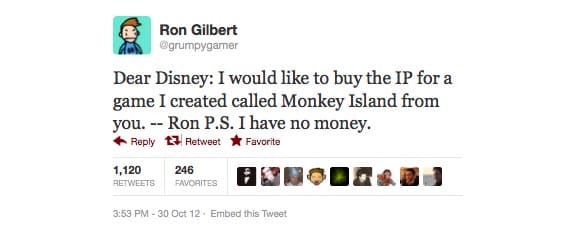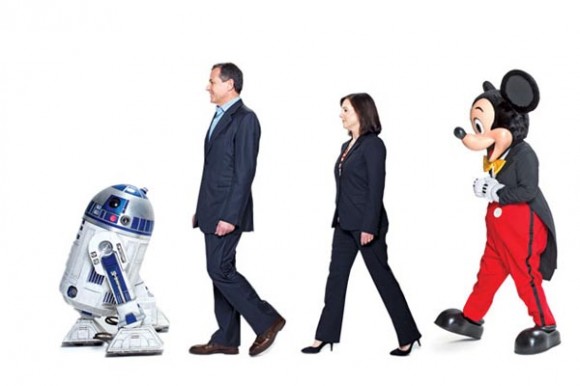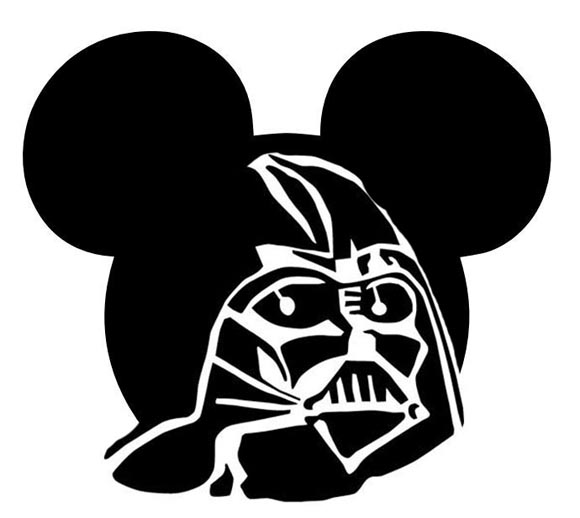
Disney’s $4.05 billion acquisition of Lucasfilm has generated more questions than answers. The Mouse has made it clear that they bought Lucasfilm for one thing, and one thing only: the Star Wars property.
But Lucasfilm’s business also includes other components such as Skywalker Sound and the visual effects studio Industrial Light and Magic (ILM). The fate of these entities remains unknown and will likely remain so for the foreseeable future.
For example, what to make of ILM’s promising start as a producer of animated features? Don’t forget that ILM’s first original film Rango won an Oscar earlier this year for Best Animated Feature. But Disney already owns its own feature animation studio as well as Pixar. It hardly needs a third studio, especially one that offers an original take on computer animation that could make the work of its other studios look formulaic by comparison. In other words, it’s a likely bet that ILM won’t be making any more animated features of its own.
However, ILM will likely continue creating the visual effects for the Star Wars films that Disney plans to start releasing in 2015. According to Variety:
On the Star Wars movies, Lucasfilm has long relied on having the resources of ILM inhouse to control vfx costs. A Lucasfilm spokesman said [Kathleen] Kennedy will continue to have autonomy to use ILM on future Star Wars films. However, that doesn’t guarantee that all work will be done in San Francisco. ILM has offices in Singapore and Vancouver and has alliances with companies in Beijing and Europe. It will continue to leverage those alliances and offshore locations to keep costs down.
And what about the visual effects work that ILM creates for other studio’s films? In his initial statements, Disney chairman-CEO Robert Iger gave a less than ringing endorsement of ILM’s business model.
The LA Times quoted Iger saying, “Our current thinking is that we would let it remain as is. They do great work. They do work for multiple studios. It’s been a decent business for Lucasfilm and one we have every intention of staying in.” The emphasis on the words ‘current’ and ‘decent’ are mine, and it’s not too difficult to read between the lines, especially when the NY Times added that Iger wants to “reap the value” it can from ILM.
History is not on ILM’s side either. In 1996, Disney acquired another respected visual effects studio DreamQuest. It merged it with its own in-house computer animation department and renamed it The Secret Lab. The Lab’s most notable effort was the feature film Dinoasur before the division was shuttered in 2002. It will be tougher to dismantle ILM, but there’s a good chance that Disney will explore some type of reorganization/merger/consolidation/sale of the studio in the coming years.
The same questions exist to a lesser degree for Lucasfilm’s storied gaming division, LucasArts. That division has struggled in recent years, as the LA Times reported:
LucasArts is currently operating without a permanent president and has not made a new game since 2010′s poorly received “Star Wars: The Force Unleashed II.” This year it announced a new title in the works, “Star Wars: 1313,” but because that game is intended to carry dark themes and be rated M (the video game equivalent of R), it may not fit into Disney’s intent to position “Star Wars” as a family entertainment brand.
Despite its recent missteps, LucasArts (and now Disney) owns a back catalog of beloved gaming classics like The Secret of Monkey Island, Grim Fandango, Full Throttle and Maniac Mansion. It’s hard to imagine what Disney will do with those titles, though Monkey Island creator Ron Gilbert tweeted a tongue-in-cheek suggestion earlier this week:

Finally, the question that many are asking is how George Lucas will spend his newly earned wealth. Lucas, who was already a billionaire before the sale, is now officially the wealthiest artist in the United States. Because he owned 100 percent of Lucasfilm, he will receive the entire $4 billion himself, roughly half in cash and the rest in Disney stock, turning him into Disney’s second-largest non-institutional shareholder with approximately 2.2% of the company.
It might be expected that Lucas would spend his money on silly douchebag toys—Lucas has reportedly spent millions on picture frames for his vintage European movie poster collection—but instead he plans to do something far more worthwhile with the bulk of his cash: philanthropy.
Education is a passion for Lucas, and he made a pledge in 2010 to dedicate the “majority of my wealth to improving education.” After this week’s sale to Disney, Lucas reiterated that goal. “As I start a new chapter in my life,” he said, “it is gratifying that I have the opportunity to devote more time and resources to philanthropy.” If he ends up following through on the pledge, this may end up being one of the few corporate mergers that has a happy ending after all.

It’s not April Fools’ Day. The Walt Disney Company is acquiring Lucasfilm and the Star Wars franchise for $4.05 billion. The press release:
Global leader in high-quality family entertainment agrees to acquire world-renowned Lucasfilm Ltd, including legendary STAR WARS franchise.
Acquisition continues Disney’s strategic focus on creating and monetizing the world’s best branded content, innovative technology and global growth to drive long-term shareholder value.
Lucasfilm to join company’s global portfolio of world class brands including Disney, ESPN, Pixar, Marvel and ABC.
STAR WARS: EPISODE 7 feature film targeted for release in 2015.
An investor conference call will take place at approximately 4:30 p.m. EDT / 1:30 p.m. PDT today, October 30, 2012. Details for the call are listed in the release.
BURBANK, Calif. & SAN FRANCISCO–(BUSINESS WIRE)– Continuing its strategy of delivering exceptional creative content to audiences around the world, The Walt Disney Company (NYSE: DIS) has agreed to acquire Lucasfilm Ltd. in a stock and cash transaction. Lucasfilm is 100% owned by Lucasfilm Chairman and Founder, George Lucas.
Under the terms of the agreement and based on the closing price of Disney stock on October 26, 2012, the transaction value is $4.05 billion, with Disney paying approximately half of the consideration in cash and issuing approximately 40 million shares at closing. The final consideration will be subject to customary post-closing balance sheet adjustments.
“Lucasfilm reflects the extraordinary passion, vision, and storytelling of its founder, George Lucas,” said Robert A. Iger, Chairman and Chief Executive Officer of The Walt Disney Company. “This transaction combines a world-class portfolio of content including Star Wars, one of the greatest family entertainment franchises of all time, with Disney’s unique and unparalleled creativity across multiple platforms, businesses, and markets to generate sustained growth and drive significant long-term value.”
“For the past 35 years, one of my greatest pleasures has been to see Star Wars passed from one generation to the next,” said George Lucas, Chairman and Chief Executive Officer of Lucasfilm. “It’s now time for me to pass Star Wars on to a new generation of filmmakers. I’ve always believed that Star Wars could live beyond me, and I thought it was important to set up the transition during my lifetime. I’m confident that with Lucasfilm under the leadership of Kathleen Kennedy, and having a new home within the Disney organization, Star Wars will certainly live on and flourish for many generations to come. Disney’s reach and experience give Lucasfilm the opportunity to blaze new trails in film, television, interactive media, theme parks, live entertainment, and consumer products.”
Under the deal, Disney will acquire ownership of Lucasfilm, a leader in entertainment, innovation and technology, including its massively popular and “evergreen” Star Wars franchise and its operating businesses in live action film production, consumer products, animation, visual effects, and audio post production. Disney will also acquire the substantial portfolio of cutting-edge entertainment technologies that have kept audiences enthralled for many years. Lucasfilm, headquartered in San Francisco, operates under the names Lucasfilm Ltd., LucasArts, Industrial Light & Magic, and Skywalker Sound, and the present intent is for Lucasfilm employees to remain in their current locations.
Kathleen Kennedy, current Co-Chairman of Lucasfilm, will become President of Lucasfilm, reporting to Walt Disney Studios Chairman Alan Horn. Additionally she will serve as the brand manager for Star Wars, working directly with Disney’s global lines of business to build, further integrate, and maximize the value of this global franchise. Ms. Kennedy will serve as executive producer on new Star Wars feature films, with George Lucas serving as creative consultant. Star Wars Episode 7 is targeted for release in 2015, with more feature films expected to continue the Star Wars saga and grow the franchise well into the future.
The acquisition combines two highly compatible family entertainment brands, and strengthens the long-standing beneficial relationship between them that already includes successful integration of Star Wars content into Disney theme parks in Anaheim, Orlando, Paris and Tokyo.
Driven by a tremendously talented creative team, Lucasfilm’s legendary Star Wars franchise has flourished for more than 35 years, and offers a virtually limitless universe of characters and stories to drive continued feature film releases and franchise growth over the long term. Star Wars resonates with consumers around the world and creates extensive opportunities for Disney to deliver the content across its diverse portfolio of businesses including movies, television, consumer products, games and theme parks. Star Wars feature films have earned a total of $4.4 billion in global box to date, and continued global demand has made Star Wars one of the world’s top product brands, and Lucasfilm a leading product licensor in the United States in 2011. The franchise provides a sustainable source of high quality, branded content with global appeal and is well suited for new business models including digital platforms, putting the acquisition in strong alignment with Disney’s strategic priorities for continued long-term growth.
The Lucasfilm acquisition follows Disney’s very successful acquisitions of Pixar and Marvel, which demonstrated the company’s unique ability to fully develop and expand the financial potential of high quality creative content with compelling characters and storytelling through the application of innovative technology and multiplatform distribution on a truly global basis to create maximum value. Adding Lucasfilm to Disney’s portfolio of world class brands significantly enhances the company’s ability to serve consumers with a broad variety of the world’s highest-quality content and to create additional long-term value for our shareholders.
The Boards of Directors of Disney and Lucasfilm have approved the transaction, which is subject to clearance under the Hart-Scott-Rodino Antitrust Improvements Act, certain non-United States merger control regulations, and other customary closing conditions. The agreement has been approved by the sole shareholder of Lucasfilm.
Note: Additional information and comments from Robert A. Iger, chairman and CEO, The Walt Disney Company, and Jay Rasulo, senior executive vice president and CFO, The Walt Disney Company, regarding Disney’s acquisition of Lucasfilm, are attached.
Investor Conference Call:
An investor conference call will take place at approximately 4:30 p.m. EDT / 1:30 p.m. PDT today, October 30, 2012. To listen to the Webcast, turn your browser to http://thewaltdisneycompany.com/investors/events or dial in domestically at (888) 771-4371 or internationally at (847) 585-4405. For both dial-in numbers, the participant pass code is 33674546.
The discussion will be available via replay on the Disney Investor Relations website through November 13, 2012 at 5:00 PM EST/2:00 PM PST.
ROBERT A. IGER, CHAIRMAN AND CEO, THE WALT DISNEY COMPANY
REMARKS FOR ANALYSTS REGARDING DISNEY’S ACQUISITION OF LUCASFILM LTD., AS PREPARED
As we just announced, The Walt Disney Company has agreed to acquire Lucasfilm and its world class portfolio of creative content – including the legendary Star Wars franchise – along with all of its operating businesses, including Industrial Light & Magic and Skywalker Sound.
George Lucas is a visionary, an innovator and an epic storyteller – and he’s built a company at the intersection of entertainment and technology to bring some of the world’s most unforgettable characters and stories to screens across the galaxy. He’s entertained, inspired, and defined filmmaking for almost four decades and we’re incredibly honored that he has entrusted the future of that legacy to Disney.
Disney has had a great relationship with George that goes back a long way – with Star Wars theme attractions in our parks in Anaheim, Orlando, Paris and Tokyo. This acquisition builds on that foundation and combines two of the strongest family entertainment brands in the world. It makes sense, not just because of our brand compatibility and previous success together, but because Disney respects and understands – better than just about anyone else – the importance of iconic characters and what it takes to protect and leverage them effectively to drive growth and create value.
Lucasfilm fits perfectly with Disney’s strategic priorities. It is a sustainable source of branded, high quality creative content with tremendous global appeal that will benefit all of Disney’s business units and is incredibly well suited for new business models, including digital platforms. Adding the Lucasfilm IP to our existing Disney, Pixar and Marvel IP clearly enhances our ability to serve consumers, strengthening our competitive position — and we are confident we can earn a return on invested capital well in excess of our cost of capital.
Star Wars in particular is a strong global brand, and one of the greatest family entertainment franchises of all time, with hundreds of millions of fans around the globe. Its universe of more than 17,000 characters inhabiting several thousand planets spanning 20,000 years offers infinite inspiration and opportunities – and we’re already moving forward with plans to continue the epic Star Wars saga.
The last Star Wars movie release was 2005’s Revenge of the Sith – and we believe there’s substantial pent up demand. In 2015, we’re planning to release Star Wars Episode 7 – the first feature film under the “Disney-Lucasfilm” brand. That will be followed by Episodes 8 and 9 – and our long term plan is to release a new Star Wars feature film every two to three years. We’re very happy that George Lucas will be creative consultant on our new Star Wars films and that Kathleen Kennedy, the current Co-Chair of Lucasfilm, will executive produce. George handpicked Kathy earlier this year to lead Lucasfilm into the future. She’ll join Disney as President of Lucasfilm, reporting into Walt Disney Studios Chairman Alan Horn and integrating and building the Star Wars franchise across our company.
Our successful acquisitions of Pixar and Marvel prove Disney’s unique ability to grow brands and expand high-quality creative content to its fullest franchise potential and maximum value.
We’ve leveraged Pixar’s terrific characters and stories into franchises across our company – from feature films to consumer products online games, major attractions in our theme parks, and more.
The 2006 Pixar acquisition delivered more than great Pixar content — it also delivered the means to energize and revitalize the creative engine at Walt Disney Animation – which was crucial to our long term success. Animation is the heart and soul of Disney and our successful creative resurgence will be on full display this weekend when Wreck-It-Ralph opens in theaters across the country.
Our acquisition of Marvel three years later combined Marvel’s strong global brand and world-renowned library of characters with Disney’s creative skills, unparalleled global portfolio of entertainment properties, and an integrated business structure that maximizes the value of creative content across multiple platforms and territories. Our first two Marvel films – Thor and Captain America grossed a total of more than $800 million at the box office. This year, Marvel’s The Avengers grossed more than $1.5 billion to become the world’s third highest grossing movie of all time – and an important and lucrative franchise for us.
We’re looking forward to a robust slate of new Marvel movies – starting with Iron Man 3 and Thor: The Dark World next year, followed by Captain America: The Winter Soldier in 2014. And, as we announced previously, Joss Whedon is writing and directing Avengers 2 and developing a Marvel-based series for ABC.
Pixar and Marvel both fit our criteria for strategic acquisitions – they add great IP that benefits multiple Disney businesses for years to come, and continue to create value well in excess of their purchase price. The acquisition of Lucasfilm is in keeping with this proven strategy for success and we expect it to create similar opportunity for Disney to drive long-term value for our shareholders.
We’re clearly excited about this move forward. We believe we can do great things with these amazing assets….we have a proven track record of maximizing the value of our strategic acquisitions…. and we’re poised to do the same with this one.
JAY RASULO, SENIOR EXECUTIVE VICE PRESIDENT AND CFO, THE WALT DISNEY COMPANY
REMARKS FOR ANALYSTS REGARDING DISNEY’S ACQUISITION OF LUCASFILM LTD., AS PREPARED
Lucasfilm, and more specifically the Star Wars franchise, fits perfectly within the Disney portfolio of intellectual properties and the strategic and financial implications of this acquisition are compelling. Our team has spent a tremendous amount of time evaluating this deal and we have concluded we are uniquely positioned to maximize the value of Lucasfilm’s IP in a manner that can generate substantial value for our shareholders above and beyond the purchase price.
In this transaction we will acquire rights to the Star Wars and Indiana Jones franchises, a highly talented and expert team, Lucasfilm’s best-in-class post production businesses, Industrial Light and Magic and Skywalker Sound, and a suite of cutting edge entertainment technologies. Our valuation focused almost entirely on the financial potential of the Star Wars franchise, which we expect to provide us with a stream of storytelling opportunities for years to come delivered via all relevant platforms on a global basis.
There are a number of ways our company will derive value from Lucasfilm’s intellectual property—some of which can be realized immediately while others will accrue to us over time. George and his team have built Star Wars into one of the most successful and enduring family entertainment franchises in history, as well as one of the best selling licensed character merchandise brands in the U.S. and around the world. However, we believe there is great opportunity to further expand the consumer products business. Today, Star Wars is heavily skewed toward toys and North America. We see great opportunity domestically to extend the breadth and depth of the Star Wars franchise into other categories. We also plan to leverage Disney’s global consumer products organization to grow the Star Wars consumer products business internationally.
Let me note that in 2012 Lucasfilm’s consumer products business is expected to generate total licensing revenue that is comparable to the roughly $215 million in consumer products revenue Marvel generated in 2009, the year in which we announced our acquisition. With renewed film releases, and the support we can give the Star Wars property on our Disney-branded TV channels, we expect that business to grow substantially and profitably for many years to come.
We also expect to create significant value in the film business. We plan to release the first new Star Wars film in 2015, and then plan to release one film every two to three years. These films will be released and distributed as part of our target slate of 8-10 live-action films per year, and will augment Disney’s already strong creative pipeline for many years to come. Lucasfilm has not released a Star Wars film since Revenge of the Sith in 2005. However, adjusted for inflation, as well as growth in both international box office and 3D, we estimate the three most recent Star Wars films would have averaged about $1.5 billion in global box office in today’s dollars. This speaks to the franchise’s strength, global appeal and the great opportunity we have in the film business.
We also expect to utilize Star Wars in other businesses including Parks & Resorts, in games and in our television business. These initiatives were also considered in our valuation.
Under the terms of the agreement, Disney will buy Lucasfilm for $4.05 billion, consisting of approximately fifty percent cash and fifty percent in Disney stock. Based on Friday’s closing price of Disney stock, we expect to issue approximately 40 million Disney shares in this transaction. We continue to believe our shares are attractively priced at current levels and therefore, we currently intend to repurchase all of the shares issued within the next two years– and that’s in addition to what we planned to repurchase in the absence of the transaction.
Our valuation of Lucasfilm is roughly comparable to the value we placed on Marvel when we announced that acquisition in 2009. Our Lucasfilm valuation is almost entirely driven by the Star Wars franchise, so any success from other franchises would provide upside to our base case. I realize it may be a challenge for you to quantify our opportunity given the limited amount of publicly available information. But to give you some perspective on the size of the Lucasfilm business– in 2005, the year in which the most recent Star Wars film was released, Lucasfilm generated $550 million in operating income. We’ve taken a conservative approach in our valuation assumptions, including continued erosion of the home entertainment market, and we expect this acquisition to create value for our shareholders.
In terms of the impact on our financials, we expect the acquisition to be dilutive to our EPS by low single digit percentage points in fiscal 2013 and 2014 and become accretive to EPS in 2015.
Our capital allocation philosophy has been consistent since Bob took over as CEO. In addition to returning capital to shareholders, we have invested, both organically and through acquisitions, in high quality, branded content that can be seamlessly leveraged across our businesses. Our acquisition of Lucasfilm is entirely consistent with this strategy, and we’re incredibly excited by the prospect of building on Lucasfilm’s successful legacy to create significant value for our shareholders.











The illustrations for this book are breathtaking! I can’t wait to add it to my collection! (For the kids, of course.)
Wow–Go Toast! I feel like I’m missing things way out here in CA.
Yowzer! What a fabulous calling card. The trailer and music would inspire me to bid on it and I’m not even a publisher.
Thanks for posting, Mark.
I love it to bits. Looks awesome
This is really inspiring! I fell in love with Toast the moment I saw this trailer. Beautiful work!